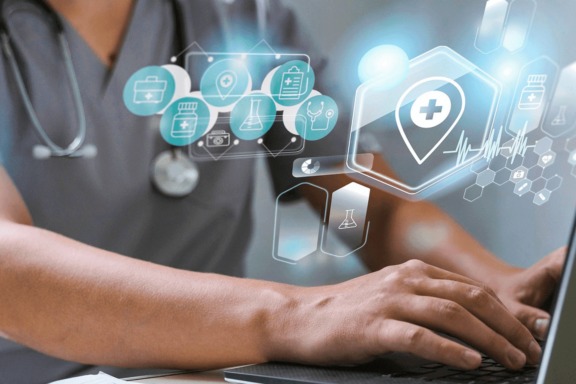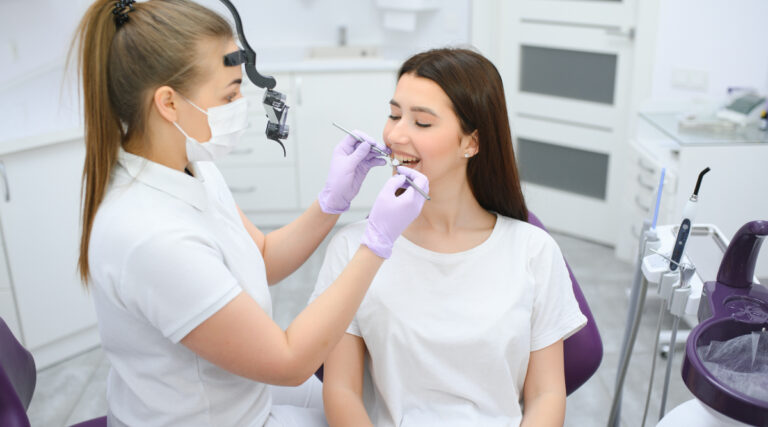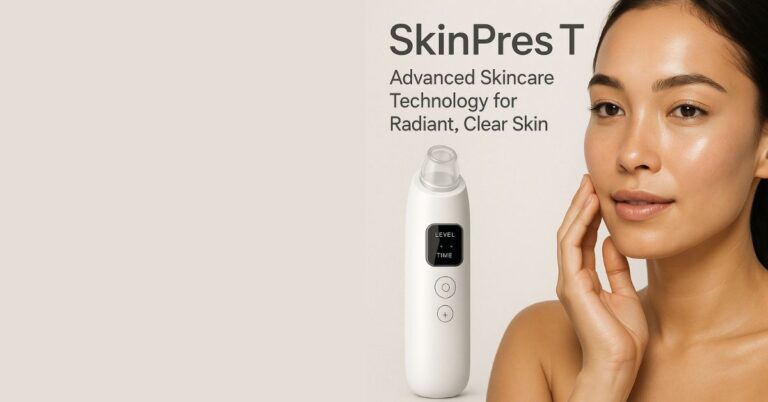IoT in Healthcare: Benefits, Use Cases & Future Scope

The Internet of Things (IoT) is a network of linked devices – like sensors, wearables, smart medical devices, and cloud-based analytics tools. These are the tools that can collect, share, and act on information without any help from people. IoT makes it possible to monitor patients in real time, make smarter diagnoses, and make better decisions in healthcare.
Today, IoT is playing a key role in transforming the healthcare ecosystem. From remote monitoring of patients and intelligent hospitals to predictive maintenance of medical equipment, these connected systems are transforming patient outcomes, operating efficiency, and cost structures. With an aging population and chronic disease on the rise, healthcare providers require scalable, smart solutions. IoT provides just that.
Look at the mind-boggling market estimates: the worldwide IoT in healthcare market is approximately USD 128 billion in 2023, with estimates from USD 621 billion by 2031–2032 at a CAGR of 17%–21%. Estimates place 2023 at USD 139.7 billion, with projections reaching USD 822.5 billion by 2032. One source estimates the more general IoMT category could reach up to USD 814 billion by 2032. By 2025, Statista predicts the IoT in healthcare market to be USD 93 billion and globally grow to USD 134 billion by the year 2029. These figures highlight the fast-growing role of IoT in healthcare sectors around the world.
This article discusses the advantages of IoT in healthcare – takes a look at real-world applications, talks about the issues IoT growth faces, and mentions the future scope and upcoming trends. We also briefly discuss the role organizations such as A3Logics play in assisting in the creation of IoT-enabled healthcare solutions.
What is IoT in Healthcare?
IoT healthcare is also referred to as the Internet of Medical Things (IoMT) – describes connected medical devices, sensors, and systems that take patient data in real time. This data is then transmitted over networks to analyze it, and initiate actions or alerts upon rules or predictions.
Components of an average healthcare IoT system are
Devices and Sensors: Wearables (such as smartwatches, fitness trackers), implanted and fixed medical devices, ingestible sensors.
Connectivity: Secure network protocols (Wi‑Fi, Bluetooth, 5G, Narrowband IoT).
Cloud/Fog/Edge Platforms: Ingestion, storage, and processing of data.
Analytics and AI Models – For predictive analysis, anomaly detection, and clinical decision support.
User Interfaces and Dashboards: For clinicians, caregivers, and occasionally patients themselves.
Some examples of IoT‑enabled devices:
- Smart wearables with heart rate, blood pressure, glucose readings.
- Remote patient monitors for chronic diseases like COPD and diabetes.
- Ingestible sensors that track internal biomarkers and send data.
- BLE or RFID tags for monitoring important medical devices.
- Robots of medical-grade, smart beds, and ICU automation to automate hospital processes.
Benefits of IoT in the Healthcare Industry
Let us see some of the benefits that the IoT provides in the health sector.
Real-Time Remote Patient Monitoring
IoT enables continuous monitoring of – physiological parameters and vital signs. Rather than relying on periodic manual inspections – data from devices can securely be streamed to clinicians and alert mechanisms. This enables timely intervention during patient deterioration; especially for chronic disease management.
Enhanced Patient Experience and Engagement
Wearables and connected devices – give patients immediate feedback on their health. They are more involved with their care plans – resulting in improved compliance and outcomes. Medication reminders and telehealth integration are some of the features that add to the patient experience.
Operational Cost Reduction
IoT assists in lowering administrative and operational expenses. It does this by – minimising manual monitoring, decreasing readmission rates, and maximizing resource utilization. The IoT systems that are implemented in hospitals can generate substantial savings in terms of – staff time and overheads.
Better Drug and Equipment Management
RFID tags and asset sensors assist hospitals in tracking – equipment usage and avoiding theft. It also helps in keeping critical devices available in desired locations. Intelligent medication cabinets and dispensers facilitate correct drug administration and compliance.
Data‑Driven Decision Making
Interconnected devices inform dashboards and analytics platforms. Clinicians are informed of trends such as – resolution rates, patient throughput, and utilization. This supports smarter scheduling, bed planning, and care prioritization.
Improved Chronic Disease Management
Chronic diseases like heart disease, diabetes, hypertension, and COPD are facilitated by remote feedback loops through IoT. Ongoing monitoring of vital signs and early detection of abnormalities lead to timely adjustment of care.
Improved Hospital Workflow
Smart healthcare infrastructures—like ICU automation, patient flow dashboards, and robotic delivery systems—minimize inefficiencies. IoT deployments across the facility enhance staff productivity, lower error rates, and enable improved patient routing and bed management.
Top IoT Use Cases in Healthcare
Here are some of the top IoT use cases in the healthcare industry:
Remote Patient Monitoring (RPM)
Patients use devices that track important health information continuously. Information is delivered to healthcare professionals through secure cloud infrastructure. This allows real-time alerts and preventive care. Particularly helpful for remote management of chronic illness.
Smart Wearables & Fitness Trackers
Fitbit, Apple Watch, or medical-grade wearables track heart rate, sleep, blood pressure, and activity. The devices send information to apps or hospital systems for remote care and self-management.
IoT‑Enabled Ingestible Sensors
Microsensor‑bundled pills send information from within the body—ideal for detecting adherence or internal biomarkers. They’re well suited to compound conditions that need real‑time tracking.
Asset Tracking for Medical Equipment
Hospitals use RFID or BLE‑based asset tracking systems to track critical equipment—e.g., infusion pumps, ventilators, beds. This saves time searching for assets and allows for improved availability and maintenance planning.
Automation of Smart Hospitals and ICUs
Patients in smart hospitals can control the conditions in their rooms, get personalized care, and staff can see digital dashboards that show how patients are moving around and how resources are being used. ICU automation makes it easier to intervene in real time by combining ventilators – monitoring, and safety devices.
Taking and managing medications
Smart medicine cabinets and automatic dispensers keep track of how much medicine is taken and when – which reduces errors and encourages adherence. This is especially useful for treating older or mentally ill patients.
Emergency Notification Systems
IoT devices send automated notifications to the staff whenever important vital sign thresholds are breached. Also when fall detection is triggered – or emergencies occur in out-of-the-way locations or care facilities.
Predictive Maintenance of Medical Equipment
Machine usage and performance can be tracked from sources connected to them, enabling preventive maintenance prior to their failure—minimizing downtime, increasing equipment life, and reducing surprise costs.
Challenges in Adopting IoT in Healthcare
IoT brings in a lot of plus points in the healthcare sector, however it does come with its own set of challenges while adopting it in healthcare. Let’s take a look at those challenges.
Data Privacy & Cybersecurity Concerns
IoT systems handle very sensitive patient information and therefore have risks such as – breaches, unauthorized use, and malware. Research points out vulnerabilities from replay attacks, man‑in‑the‑middle attacks, and insider attacks. Strong authentication, encryption, and anomaly detection are paramount.
Legacy System Integration
Most healthcare providers have legacy systems – and integrating new IoT infrastructure becomes challenging. Seamless integration is necessary to prevent data silos and provide standardized workflows.
HIPAA & Other Compliance
Compliance to data privacy regulations governing health data is mandatory. Compliant audit trails – encryption, access controls, and data governance must be incorporated in IoT systems.
Interoperability of Devices
IoT platforms consist of multiple vendors and protocols. Requiring different devices to communicate reliably and securely is a critical technical challenge.
Initial High Upfront Cost
Secure IoT infrastructure build-out—devices, networks, analytics platform, and training—can be costly in terms of capital, particularly for smaller providers.
Quantum‑Era Encryption Threats
Rising threats such as quantum computing can breach conventional encryption utilised by IoT devices. Post‑quantum cryptography and new security architectures will be essential to future‑proof systems.
.
Future Horizon of IoT for Healthcare
Convergence of AI & IoT for Smart Care
Artificial intelligence layered over IoT can enable – early detection, predictive diagnosis, and personalized treatment plans. AI‑enabled sensors can alert anomalies in real time, enabling clinicians to react with greater speed.
Blockchain for Secure Data Sharing
Blockchain and decentralized ledgers have the potential to secure healthcare data exchanges while preserving patient privacy and auditability.
5G Driving IoT Medical Use Cases
Ultra-fast, low-latency networks such as 5G support real-time telehealth services, augmented-reality surgery assistance, remote robotics, and quicker data transmission.
Personalized & Predictive Care
Analytics and IoT data allow for proactive interventions. Chronic patients are provided with personalized notifications – reminders for medication dosage, or care coordination, depending on predictive analytics.
IoT-powered telehealth and remote monitoring expand access to quality care in rural areas or underprivileged areas, closing healthcare disparities and reducing travel burdens.
A3Logics Ability to Design an IoT‑Enabled Healthcare Solution
Companies such as A3Logics have expertise in designing tailored IoT solutions for healthcare. Their abilities would normally consist of
- End-to-end IoT solution design – sensor integration, connectivity, cloud architecture, and dashboards.
- Data pipelines that follow governance models like – HIPAA or GDPR are safe.
- Combining analytics and AI to give predictive insights and score the risk of patients.
- Making web and mobile portals for – doctors and patients to use together.
- System maintenance and support in real time, including working with EHR/PMS systems.
To learn more about how to partner with anIoT development company to install such solutions.
Conclusion
The convergence of IoT and healthcare is unleashing deep changes—everything from real-time patient monitoring and more intelligent hospital workflows to predictive analytics and tailored care. As a market expected to grow from USD 128 billion in 2023 to more than USD 600–800 billion by 2031–2032, adoption is gaining momentum. Data security, interoperability, and upfront investment remain hurdles, but the potential advantages—enhanced patient satisfaction, cost savings, better health outcomes, and operational performance—make IoT a strategic imperative.
As technologies such as AI, blockchain, and 5G come together with IoT, smart, safe, and scalable systems will reshape the way healthcare is experienced. Implementation partners like – A3Logics bring the technical capabilities necessary to help healthcare providers navigate this path.
In conclusion, IoT in healthcare isn’t merely a tech fad—it’s the future of connected, effective, and patient-focused care.






